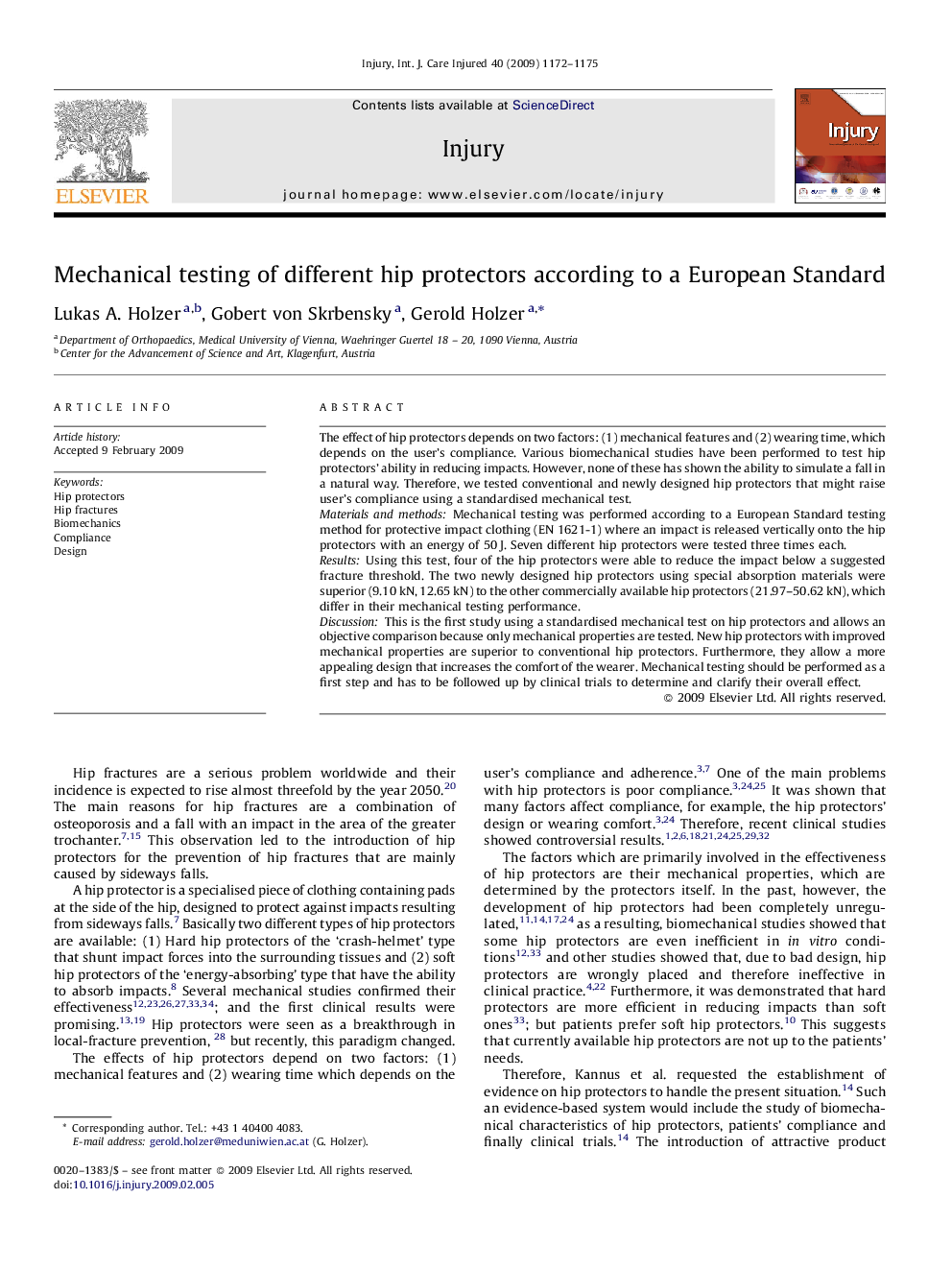| Article ID | Journal | Published Year | Pages | File Type |
|---|---|---|---|---|
| 3240825 | Injury | 2009 | 4 Pages |
The effect of hip protectors depends on two factors: (1) mechanical features and (2) wearing time, which depends on the user's compliance. Various biomechanical studies have been performed to test hip protectors’ ability in reducing impacts. However, none of these has shown the ability to simulate a fall in a natural way. Therefore, we tested conventional and newly designed hip protectors that might raise user's compliance using a standardised mechanical test.Materials and methodsMechanical testing was performed according to a European Standard testing method for protective impact clothing (EN 1621-1) where an impact is released vertically onto the hip protectors with an energy of 50 J. Seven different hip protectors were tested three times each.ResultsUsing this test, four of the hip protectors were able to reduce the impact below a suggested fracture threshold. The two newly designed hip protectors using special absorption materials were superior (9.10 kN, 12.65 kN) to the other commercially available hip protectors (21.97–50.62 kN), which differ in their mechanical testing performance.DiscussionThis is the first study using a standardised mechanical test on hip protectors and allows an objective comparison because only mechanical properties are tested. New hip protectors with improved mechanical properties are superior to conventional hip protectors. Furthermore, they allow a more appealing design that increases the comfort of the wearer. Mechanical testing should be performed as a first step and has to be followed up by clinical trials to determine and clarify their overall effect.
